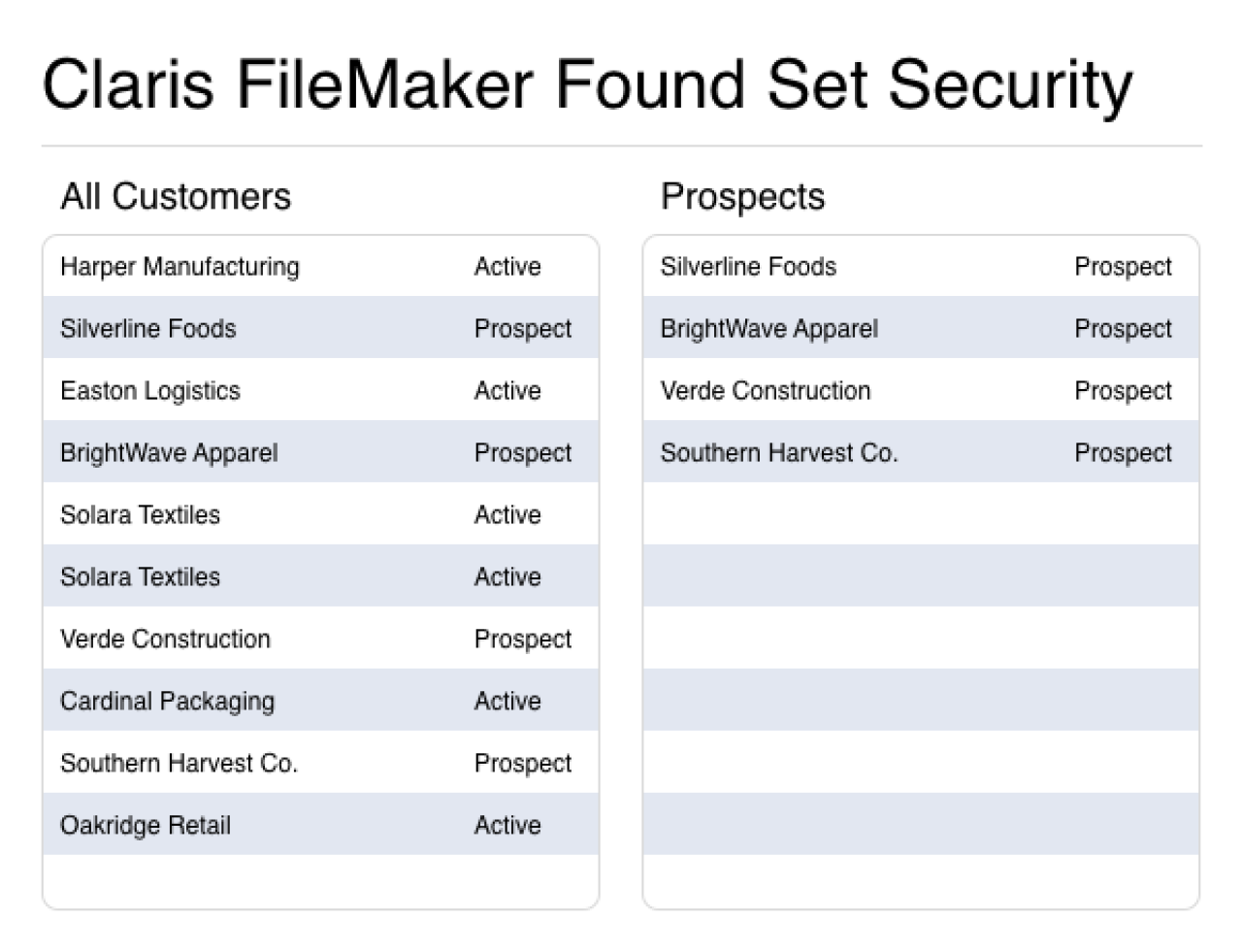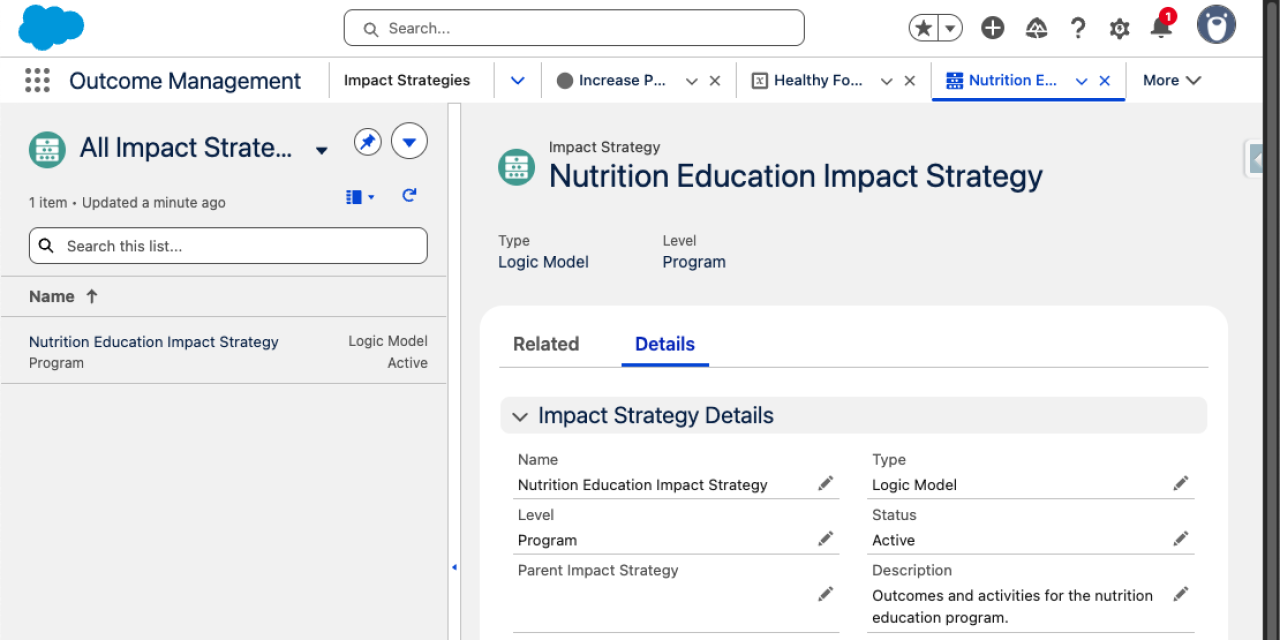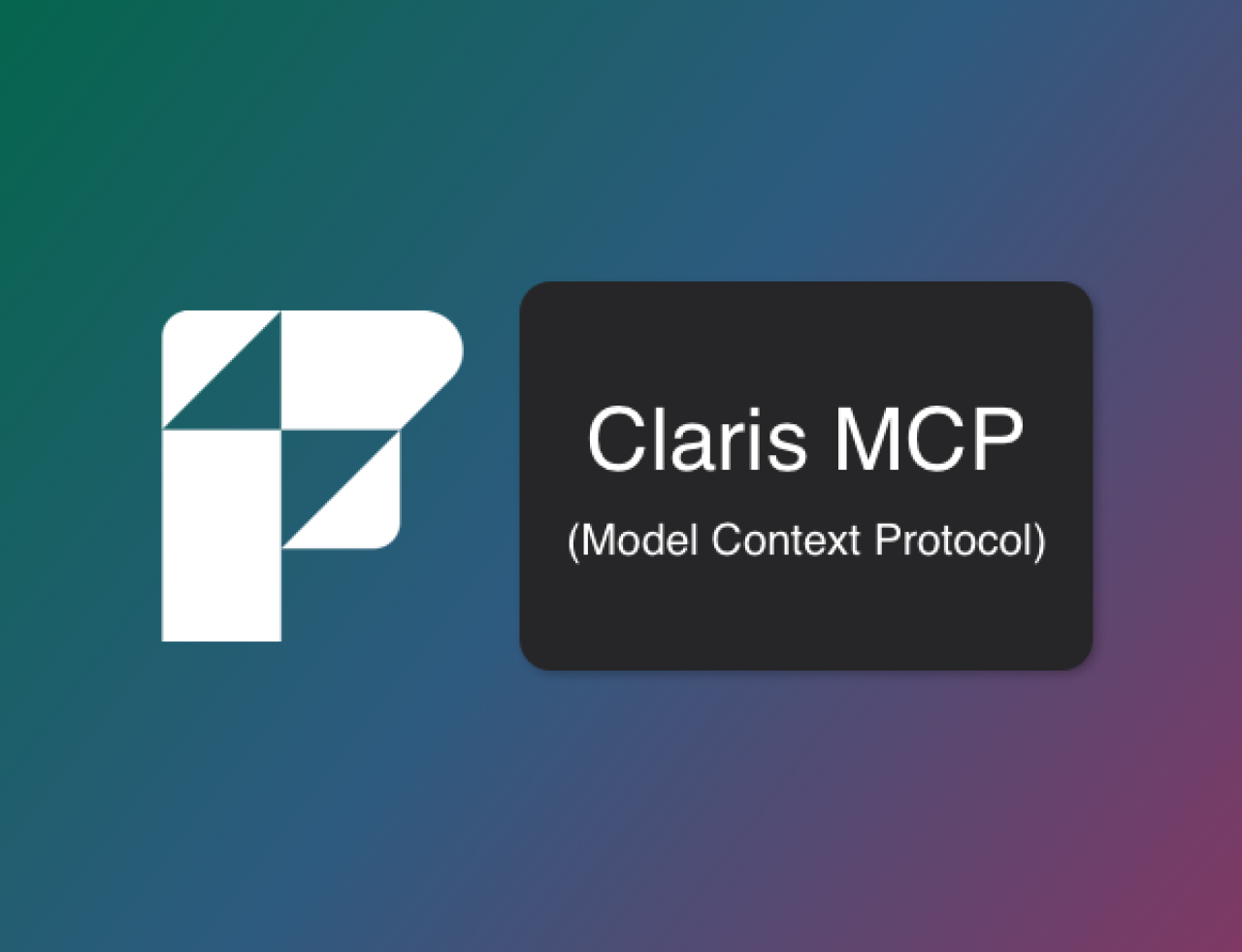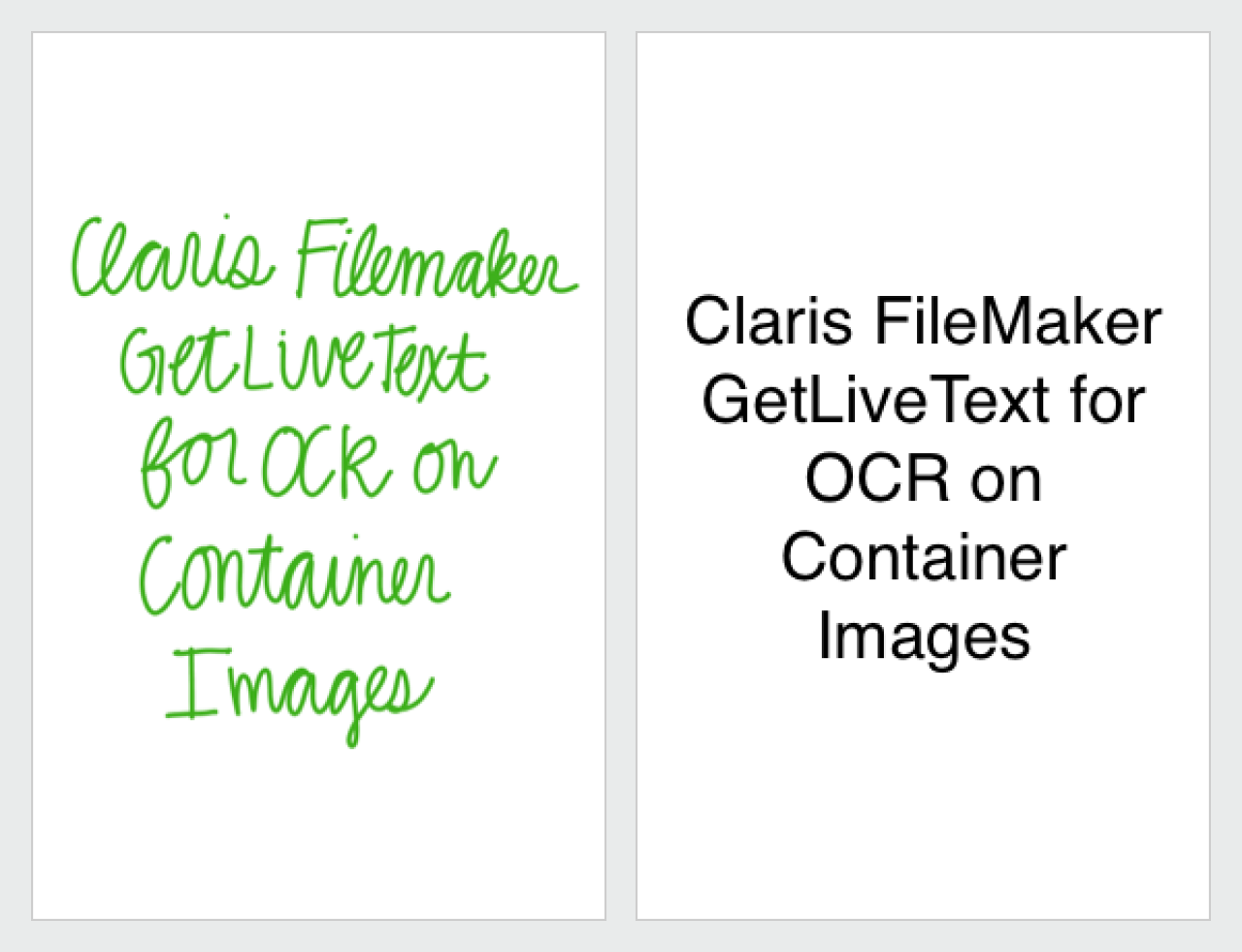
Salesforce’s Nonprofit Cloud (NPC) is full of many wonderful tools to help nonprofit organizations with funding, delivering, and measuring the impact of services. A nonprofit’s impact can be described as the mission for meaningful, long-term changes that the organization strives to achieve. This impact comes from quantifiable changes for program participants, known as outcomes.
With a good grasp of your organization’s outcomes, you will have an easier time gauging the impact your organization has on the world. This is where Outcome Management comes in. Outcome Management is an impact measurement tool on the Salesforce platform that allows you to define, measure, and evaluate your organization's outcome strategy on one centralized platform. We will go over some of the key features of Outcome Management that can be used out of the box.

Impact Management
Before discussing aspects of Outcome Management, we need to go over some key terminology and inputs to get the most out of the tools.
Theory of Change
Theory of Change is an outline for your plan of making an impact on the world or participants in your program. Your organization’s plan should include these elements:
Inputs are what is invested into your plan for change. Common examples include time and money.
Activities are the processes that are performed to create change for the world or your program participants. Examples include cleaning up litter, hosting courses for participants, and food drives.
Outputs, or indicators, are measurables that are produced from activities, such as the hours spent cleaning up litter, or the number of people served at a food drive.
Outcomes are the measurable changes that can be seen in participants of your programs. Examples include the knowledge that participants gain from attending program courses or people who do not miss a meal because they attended your food drive.
Impact, as was said earlier, is the long-term effect that your organization hopes to see in the world. Examples include cleaner streets, more secure housing, and fewer people going hungry in the world.
Once you have outlined these elements for your organization, it will be easier to qualify and quantify your data with Salesforce’s Outcome Management.
Learning Agenda
The learning agenda is a set of questions that will aid your organization in identifying evidence-building activities and their indicators to support your theory of change. There are no one-size-fits-all questions to be asked, but here are a couple that can help your organization identify knowledge gaps or evidence required for your theory of change:
How can we understand and improve the impact of our work?
How do we prioritize investments and activities given our limited resources?
How can we expand our reach to meet the needs of more participants?
How can we shift from measuring outputs to measuring outcomes?
What indicators can we use to measure outcomes that are both meaningful and practical to collect?
Data-Collection Plan
The next step to getting the most out of Outcome Management is asking yourself questions to better determine what indicators your organization is looking for, as well as how to acquire them. Consider the problems your organization is trying to resolve, and list what would lead to making this resolution a reality. These sample questions are a good starting point:
Who does the problem most affect, and to what degree?
How do we identify the proper targets for our efforts?
How does our organization connect with participants to solicit their feedback?
What are the opportunities for data collection?
After all this, you will have a better understanding of the Outcome Management App and how to use it to its fullest potential.
Outcome Management App
The Outcome Management App is a one-stop shop for setting up outcomes and evaluating your organization's impact. The home page offers a compact view of the defined outcomes, the indicators tied to them, and the open performance period for measuring your outcomes. You can also manage your assessments, which can be used to better determine the progress your participants are making with your programs and benefits.
Better yet, the app is completely customizable, so you can modify it to fit your organization's specific requirements. Standard tabs include outcomes, indicators, impact strategies, programs and benefits, and objects used to represent these categories. Consider the tabs available and your organization’s mission when deciding what needs to be included for Outcome Management to work with your organization’s needs.

Key Objects in Outcome Management
There are a couple of objects in Outcome Management that can be utilized to better grasp your organization’s impact.
Outcomes
Outcomes are measurable changes in program participants and other stakeholders. When setting up outcomes, think about your organization's mission, how you could measure it, and what sort of timeline you expect this outcome to take to be measurable.
One example of an outcome could be knowledge your participants display about healthy foods in a nutrition education program.

Outcome Activities are how Salesforce connects your outcomes to the programs, goals, or benefits that your organization provides. Think about the benefits and programs your organization offers when connecting these activities to outcomes.
One example of an outcome activity is connecting a nutrition counseling benefit to the outcome of improving participants' knowledge of healthy foods.

Indicators
Indicators are the values that can be measured for your outcomes. Indicator Definitions are used in Salesforce to provide a standard description of your organization’s measurables. When setting them up, think about what aspects of your programs or benefits can be measured in participants to determine progress.
For our nutrition education example, we could use a scorable assessment of a participant’s knowledge of healthy food as an indicator definition.

Indicator Assignments are how Salesforce connects your indicator definitions to outcomes and programs. Consider the indicators of your programs when connecting them to your outcomes.
For our example, an increase in score for an assessment is our indicator assignment.

Indicator Performance Periods are how you tie your indicator assignments to specific periods of time. This can be used to better understand the rate of progress your participants are achieving as time goes on. You can set the baseline value that participants start with at the beginning of the performance period, as well as the target value that participants aim for.
For example, participants enter the performance period with an assessment score of 73, and we expect them to achieve an assessment score of 85 by the end of the performance period.

Indicator Results store your measurements for the performance period. You can use indicator results to store results from external sources. However, if your results are stored in Salesforce, you can always set up a flow to automatically create indicator results for a performance period.
For our example, the indicator result will store the actual score a participant receives when filling out an assessment.

Impact
Now that we have outcomes and their indicators set up, we can start tying them to your organization's impact. Impact Strategy records represent a group of outcomes that show the strategy in place to positively impact participants in your programs, be they individuals, stakeholders, or the environment.

Impact strategies are connected to outcomes using Impact Strategy Assignment records. When setting these up, consider the overarching impact your organization hopes to achieve and what outcomes can be used to represent progress toward this impact.

Assessments
Now that we have reviewed some of the important pieces to working with Salesforce’s Outcome Management, we need to discuss how to capture data to be utilized for the indicators and outcomes.
Dynamic Assessments is a tool that works with Outcome Management to provide detailed surveys that can be utilized to populate your indicator results. For our example, we can use Dynamic Assessments to build a questionnaire for participants that asks them questions regarding nutrition and their benefits in order to assess the effectiveness of the programs offered to these participants.
Once the assessments are completed, we can store the results with indicator result records. When tied in with performance periods, you will have a better understanding of what actions need to take place in order for participants to meet an expected outcome.
Due to their sophistication, Dynamic Assessments need a higher level of configuration, so it will help to have a Salesforce admin set up this tool. Assessments are run through Salesforce’s Omniscript and composed of Assessment Questions. These questions are grouped by similarity with Assessment Question Sets, which are then added to Assessments that can be distributed to participants in your organization’s programs.
ARC
With all the other components set up, it is now possible to properly visualize the impact of your organization’s strategies. The Actionable Relationship Center (ARC) is the right tool for visualizing the relationship between all the records that were set up.
With ARC, we can start at an impact strategy record, see all the outcomes connected to all, the indicator assignments and outcome activities connected to those outcomes, and so on. With all this vital information on one convenient screen, it has never been easier to see the positive effect your organization is having on its participants.
Setting up an ARC will require a Salesforce admin. Once it is set up, it can be added to whatever page makes the most sense for the data that is being shown.

Conclusion
With this understanding of objects and components in Salesforce Nonprofit Cloud's Outcome Management, your organization will have an easier time assessing not only your program outcomes, but the impact that you have on the world. Better yet, with the concepts and questions presented for impact management, your organization will have an easier time translating its mission into data that can be readily utilized in the Outcome Management app for data-driven decisions.
However, there is still a plethora of great features and components in the Nonprofit Cloud that you will have to familiarize yourself with. If you have any questions about Outcome Management or other aspects of the Nonprofit Cloud, please reach out to us at DB services.
Need help with your Salesforce digital transformation? Contact us to discuss Salesforce consulting, implementation, development, and support!





